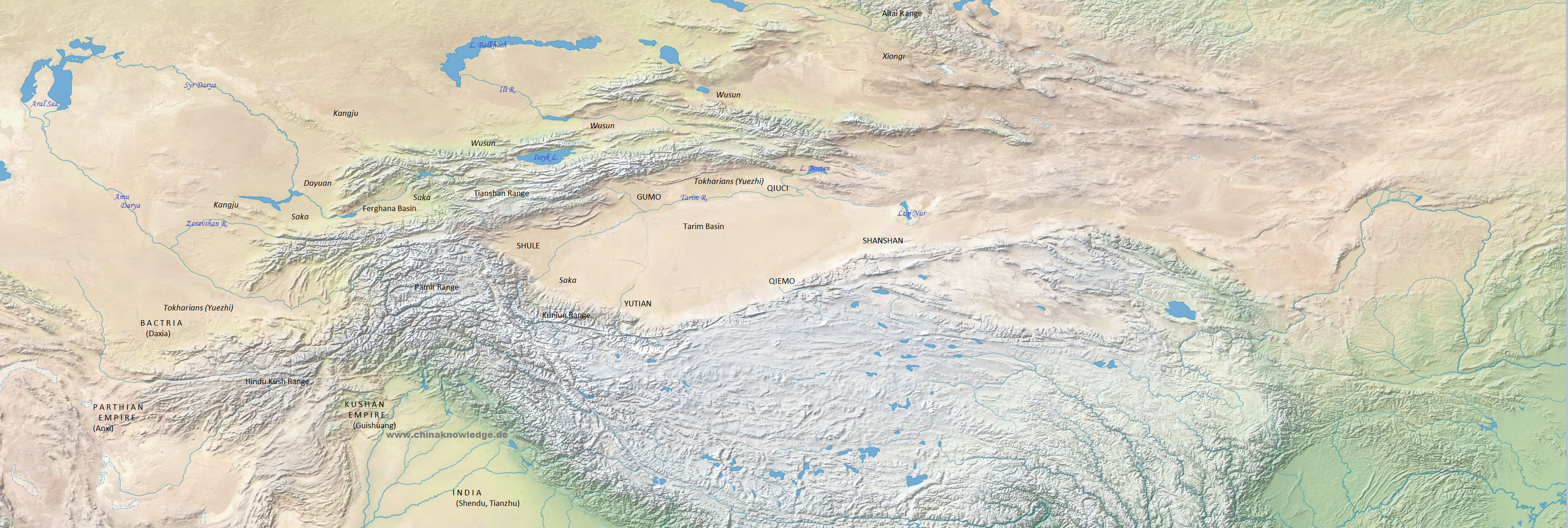Daxia 大夏 was the Chinese name for Bactria, a country located south of the River Amu Darya and north of the Hindukush Range. The name is first mentioned in the history Shiji 史記 from the Former Han period 前漢 (206 BCE-8 CE).
The region of Bactria was part of the Achemenid empire (558-330 BCE) of the Persians and of the Seleucid empire (312-256 BCE) of the Greeks in Central Asia. Between 254 and 142 Bactria (Daxia) was an own kingdom under a Hellenic dynasty. The capital of this kingdom was Bactra or Zariaspa (modern Balkh, Afghanistan). The kingdom of Bactria controlled the whole region and even sent out its tentacles into the plain of the River Indus under the reign of Euthydemos and Demetrios. In 167 Bactria was occupied by the Seleucids. In 159 it was again occupied by the Parthians (Chinese name Anxi 安息), and only the core part of Bactria remained independant.
 |
Based on Tan Qixiang 譚其驤, ed. (1995), Zhongguo lishi ditu ji 中國歷史地圖集, Vol. 2, Qin, Xihan, Donghan shiqi 秦西漢東漢時期 (Beijing: Zhongguo ditu chubanshe, 1996). Tribes and peoples in italics, states in normal letters. |
Around the same time the Yuezhi 月氏 (Tokharians) migrated to the west and occupied the region between the Aral Sea and the Hindukush Range. They conquered the kingdom of Bactria around 130 BCE, as can be attested by the Chinese traveller Zhang Qian 張騫. The culture of the Hellenic kingdom of Bactria survived in many places in Afghanistan and northern India.